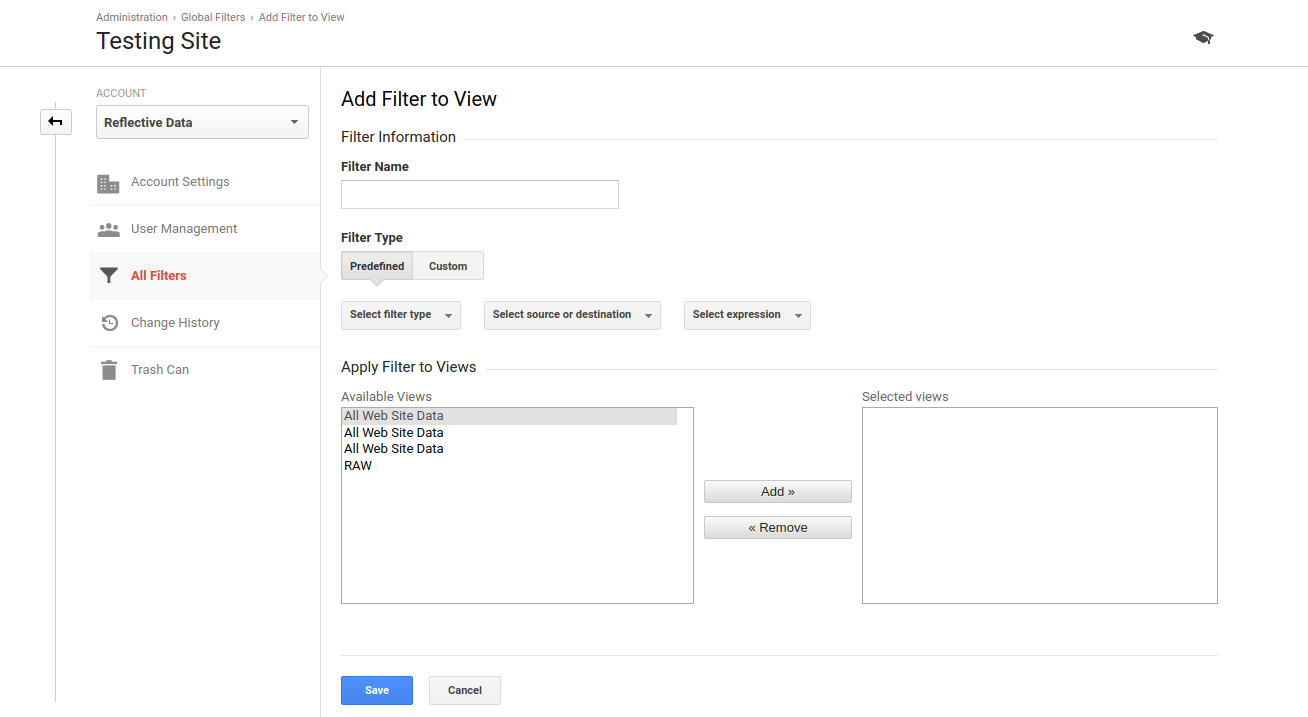The Main Principles Of In Which Order Does Google Analytics Filter Data
Excitement About In Which Order Does Google Analytics Filter Data
Table of Contents7 Simple Techniques For In Which Order Does Google Analytics Filter DataSome Known Facts About In Which Order Does Google Analytics Filter Data.Everything about In Which Order Does Google Analytics Filter DataThe 9-Second Trick For In Which Order Does Google Analytics Filter DataGetting My In Which Order Does Google Analytics Filter Data To WorkRumored Buzz on In Which Order Does Google Analytics Filter Data
io" is the web site and also if I most likely to the homepage as well as click a few other web pages like signup page, it shows me in the real-time record popping-up as just how we established up in the filters. This page is the of internet site as well as you can see the sub-domain highlighted as.
Similar to the previous process, we have to develop a new filter as discussed in the last actions - In Which Order Does Google Analytics Filter Data. in this new filter, I'm calling it as and I'm picking Then I'm typing the filter pattern as In this filter pattern, the pipeline icon () is included to connect any type of other hostname that you intend to consist of together with the various other hostnames
In Which Order Does Google Analytics Filter Data Can Be Fun For Everyone
This is how you can go check your internet site and resurgence view in real-time records. The real-time record currently reveals the adjustments that you made when producing that filter. In this situation, the Fractured web page describes about link of the web page i. e when the Web page link being duplicated the exact same, leaving out reduce or any minute components.
Now produce a new filter as well as I call it as. Pick and also select the filter areas.
10 Easy Facts About In Which Order Does Google Analytics Filter Data Described
The adhering to instructions will walk you via the procedure: Create a new Google Spread sheet (or open up an existing one). From the add-on summary page, click the "+" in the top right corner to include this add-on to your spread sheet.
Reports can be produced by hand or with the assistance of the add-on's record production tool. To make use of the tool, select "Add-ons" > "Google Analytics" > "Produce a New Record" from the menu bar.
This is deliberate. In Which Order Does Google Analytics Filter Data. The tool is indicated to aid obtain you began and also give you with the details you could not recognize off the top of your head. The remainder of the areas will certainly require to be gotten in by you. If you websites have any kind of inquiries concerning what to place in each area, see the recommendation at the end of this page.
The Best Strategy To Use For In Which Order Does Google Analytics Filter Data
It can be a sheet in the spread sheet you're currently in, or a different spread sheet entirely (as long as you have edit accessibility to that spreadsheet). To publish the outcomes to a various spread sheet duplicate the spread sheet URL and also paste it right into the cell to the right of the "spreadsheet-url" specification.
This opens up a record scheduling dialog where you can transform scheduling on as well as off, and visit this page establish how frequently your report will run. To turn scheduling on, inspect package labelled "Enable records to run automatically." As soon as scheduling is allowed you can use the choose dropdown to regulate the time as well as frequency.
When organizing records, make sure there is lots of time in between when you create the routine and when the routine is intended to run. If it's too near to the initial occurrence of the scheduled time, there's a the original source possibility those records will be delayed till the next incident. It's normally best to leave at least a one-hour buffer.
Unknown Facts About In Which Order Does Google Analytics Filter Data
Hidden parameters are advanced options that are not needed for most reports and are concealed by default. You can use these parameters by un-hiding the rows 14-16 in the Report Configuration sheet. Call Description This is the report name. It will certainly additionally be the name of the sheet where the record information is created.
For instance, the following expression returns the last day of the previous month: =EOMONTH(TODAY(), -1) Completion day for fetching Analytics information. Demands can specify an end day formatted as YYYY-MM-DD, or as a loved one day (e. g., today, yesterday, or Ndays, Ago where N is a positive integer). You can additionally utilize Sheets date features to define this value programmatically.
Metrics can be specified in either layouts: For instance, all of the following are legitimate worths for the Metrics parameter. ga: sessions, ga: bounces ga: sessions ga: bounces ["expression": "ga: sessions/ga: users", "pen name": "Sessions per Customer", "formatting, Kind": "DRIFT", "expression": "ga: overall, Events/ga: pageviews", "alias": "Events per Pageview", "formatting, Kind": "FLOAT"] For most utilize cases, a checklist of metric IDs is the most convenient method to define the Metrics specification.
Some Known Facts About In Which Order Does Google Analytics Filter Data.
Call Description A checklist of measurements to inquire. Dimensions can be defined in one of two formats: For instance, all of the complying with are valid worths for the Metrics specification. For many use situations, a listing of measurement IDs is the easiest way to define the Dimensions specification.